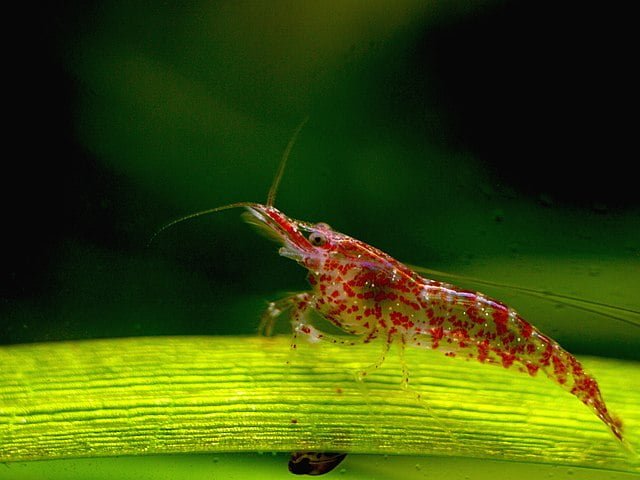
Antibiotics are widely used in aquaculture to combat diseases and promote growth. However, their excessive use can lead to intestinal microbial dysbiosis, disrupting the delicate balance of beneficial and harmful bacteria.
Probiotics have emerged as a promising approach to restoring gut health in aquaculture. By introducing beneficial bacteria into the intestinal tract, probiotics can help counteract the negative effects of antibiotics and promote a healthy microbial balance.
A study published by researchers from the Ocean University of China, the Qingdao National Laboratory for Marine Science and Technology, and Qingdao Ruizi Marine Engineering Research Institute Co., in the Journal of Hazardous Materials, aimed to investigate the efficacy of probiotic intervention and natural recovery strategies in restoring the growth and intestinal microbial community of Penaeus vannamei after disturbance by florfenicol.
Dysbiosis in Shrimp
Dysbiosis is a term used to describe any change in the resident commensal community structure compared to a healthy individual. It can be classified into three main types: decreased alpha diversity of the microbial community, increased abundance of potentially pathogenic microorganisms, and reduced abundance of potentially beneficial bacteria.
Previous studies have shown that various factors, such as chemotherapeutics, infectious diseases, environmental stressors, high-fat diets, and starvation, can modify the diversity and composition of the gut microbiota, leading to an imbalance in the microbial ecosystem and the onset of susceptible diseases.
Antibiotics are one of the main factors that can contribute to dysbiosis. Florfenicol, a commonly used antibiotic in aquaculture, has been shown to induce dysbiosis in shrimp. Florfenicol has been associated with various adverse effects on the health of aquatic organisms, including nuclear abnormalities, histopathological aberrations, and compromised intestinal and liver health.
Probiotics as an Alternative
Probiotics, which are live microorganisms that confer health benefits to the host, have emerged as a promising strategy to restore gut health and mitigate the negative effects of antibiotic use.
Several studies have demonstrated the efficacy of probiotics in alleviating antibiotic-associated diarrhea, reducing intestinal injuries, and promoting microbial diversity in various animal models.
Experimental Design
The researchers compared three recovery strategies: natural recovery, probiotic intervention, and continuous florfenicol supplementation. To do this, the researchers employed a feeding trial design, where shrimp were fed a basal diet supplemented with florfenicol (FC), Lactobacillus plantarum W2 (LM), or a combination of both.
Stay Always Informed
Join our communities to instantly receive the most important news, reports, and analysis from the aquaculture industry.
Results
The results showed that dietary supplementation with the probiotic Lactobacillus plantarum W2, either continuously or after florfenicol disturbance, significantly improved shrimp growth performance. Early natural recovery and probiotic intervention did not induce significant alterations in microbial diversity and community structure.
However, both probiotic intervention and natural recovery strategies gradually reduced the abundance of potentially pathogenic bacteria while increasing the abundance of potentially beneficial bacteria.
The composition of the microbial community in the gut habitat differed significantly under various recovery strategies compared to the control. Notably, the microbial community composition in the gut habitat after probiotic recovery showed greater similarity to that of continuous supplementation with the W2 strain without florfenicol disturbance.
Conclusion
The study highlights the importance of probiotic intervention in restoring intestinal microbial balance in shrimp. Probiotic intervention and natural recovery strategies facilitated the attainment of new stable states by altering key taxa.
However, the recovery of the microbial community through probiotic intervention appears to be more effective than natural recovery in terms of the stability of the intestinal microbial community.
Key Conclusions:
- Probiotic intervention can improve shrimp growth performance and restore intestinal microbial balance.
- Natural recovery strategies can also facilitate the attainment of new stable states, but may not be as effective as probiotic intervention.
- The composition of the microbial community in the gut habitat differs according to different recovery strategies, with probiotic recovery showing greater similarity to continuous supplementation with the W2 strain without florfenicol disturbance.
- Probiotic intervention appears to be more effective than natural recovery in terms of intestinal microbial community stability.
The study was funded by the National Key Research and Development Program of China.
Contact
Xiangli Tian
The Key Laboratory of Mariculture (Ocean University of China), Ministry of Education
Qingdao 266003, China
Email: xianglitian@ouc.edu.cn
Reference
Luo, K., Yang, Z., Wen, X., Wang, D., Liu, J., Wang, L., Fan, R., & Tian, X. (2024). Recovery of intestinal microbial community in Penaeus vannamei after florfenicol perturbation. Journal of Hazardous Materials, 480, 136158. https://doi.org/10.1016/j.jhazmat.2024.136158
Editor at the digital magazine AquaHoy. He holds a degree in Aquaculture Biology from the National University of Santa (UNS) and a Master’s degree in Science and Innovation Management from the Polytechnic University of Valencia, with postgraduate diplomas in Business Innovation and Innovation Management. He possesses extensive experience in the aquaculture and fisheries sector, having led the Fisheries Innovation Unit of the National Program for Innovation in Fisheries and Aquaculture (PNIPA). He has served as a senior consultant in technology watch, an innovation project formulator and advisor, and a lecturer at UNS. He is a member of the Peruvian College of Biologists and was recognized by the World Aquaculture Society (WAS) in 2016 for his contribution to aquaculture.




